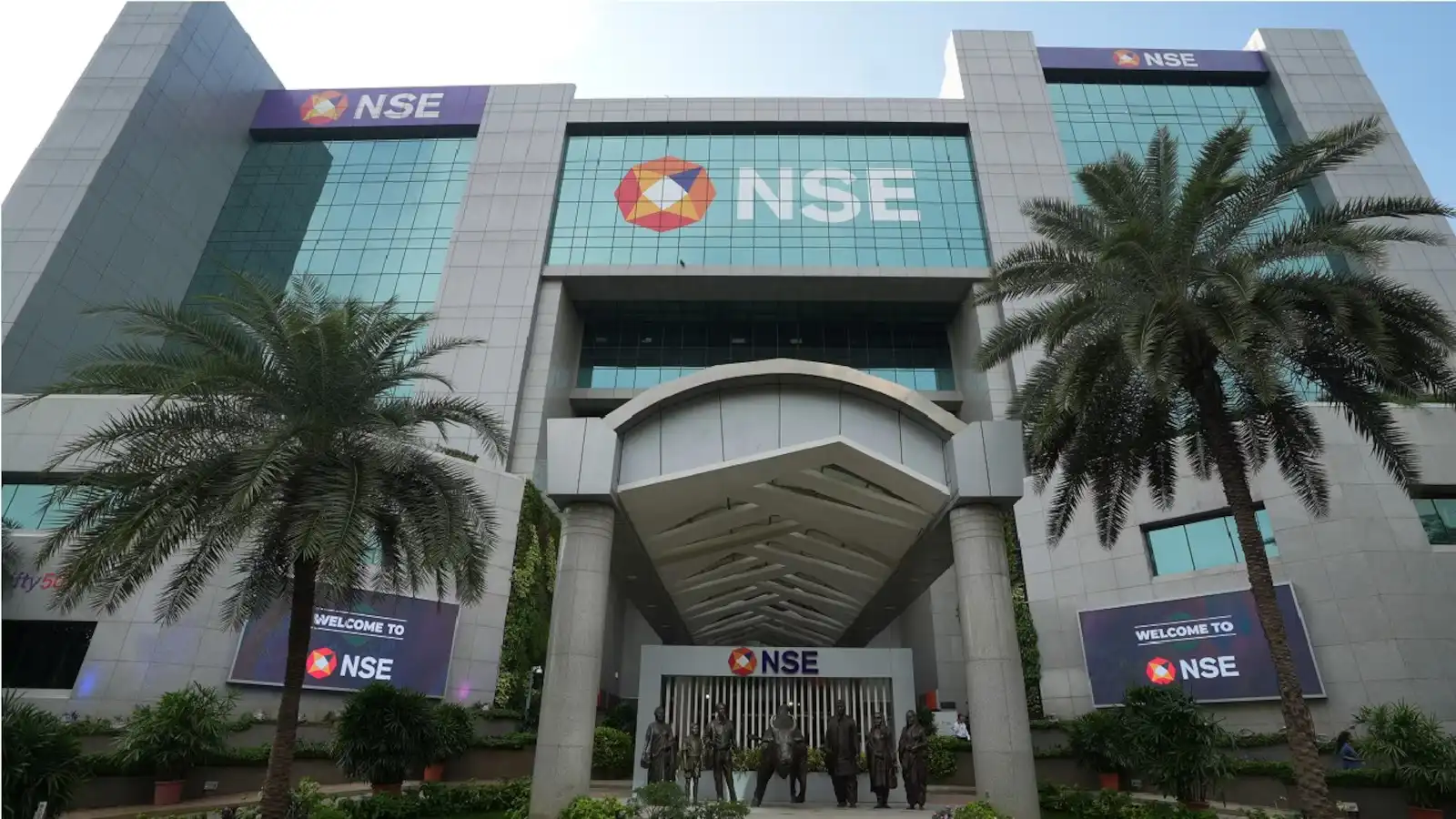In a significant testament to India’s burgeoning economic prowess and robust capital markets, the National Stock Exchange of India (NSE) has cemented its position as a global leader in initial public offering (IPO) fundraising. According to the latest report from S&P Global Market Intelligence, the NSE secured the fourth spot worldwide in the first half of 2025, amassing an impressive $5.51 billion in proceeds. This remarkable achievement places India’s premier exchange firmly behind only the Nasdaq Global Market, the New York Stock Exchange (NYSE), and the Nasdaq Global Select Market, underscoring its growing influence on the international financial stage.
The Significance of IPOs in a Dynamic Economy
An Initial Public Offering (IPO) marks a pivotal moment in a company’s lifecycle, transitioning from private ownership to public trading. For businesses, an IPO serves as a crucial mechanism to raise substantial capital for expansion, debt reduction, research and development, or simply to provide liquidity for early investors and founders. For the broader economy, a vibrant IPO market is a strong indicator of investor confidence, economic growth, and a healthy financial ecosystem. It enables job creation, fosters innovation, and allows the general public to participate in the growth stories of promising companies. The NSE’s elevated ranking is not just a statistical triumph; it reflects the deep-seated optimism surrounding India’s economic trajectory and the increasing sophistication of its capital markets.
A Closer Look at NSE’s Stellar Performance in H1 2025
Despite a somewhat cautious start to the year, marked by global and domestic equity volatility, the Indian primary market has demonstrated remarkable resilience and a strong capacity for rebound. The S&P data reveals that in the first six months of 2025, Indian markets witnessed 119 IPOs, collectively raising a substantial Rs 51,150 crore (approximately $6.13 billion at current exchange rates, though S&P’s figure is $5.51 billion, likely due to a specific conversion rate used for their report). This figure, while representing fewer listings compared to the 157 IPOs in the first half of 2024, significantly surpasses the Rs 37,682 crore raised during that earlier period.
This shift indicates a maturing market where the focus is increasingly on larger, more substantial offerings rather than a high volume of smaller ones. The average deal size has clearly grown, reflecting greater investor appetite for established, fundamentally strong companies seeking significant capital infusions. This trend is a positive sign, suggesting that both issuers and investors are becoming more discerning, prioritizing quality and scale.
Reflecting on 2024: A Foundation for Growth
The strong performance in the first half of 2025 builds upon a robust foundation laid in the preceding year. Indian exchanges concluded 2024 with an impressive Rs 1.71 lakh crore ($20.5 billion) raised across 333 IPOs. This period was notably buoyed by landmark deals that captured both domestic and international attention. A prime example was Hyundai Motor India’s monumental $3.3 billion share sale. This mega-listing not only injected significant capital into the market but also signaled the confidence of large multinational corporations in India’s growth story and its public markets as a viable fundraising avenue. Such large-scale listings often act as catalysts, drawing in more institutional investors and setting a positive precedent for other companies contemplating their public debuts. The success of these large IPOs in 2024 instilled confidence, paving the way for the robust activity seen in the first half of 2025.
Navigating Global Headwinds: Volatility and Resilience
The S&P report astutely points out that the primary market’s initial slower pace in early 2025 was largely attributable to prevailing global and domestic equity volatility. Global markets have been grappling with a confluence of factors, including persistent inflationary pressures in major economies, the ongoing geopolitical tensions in Eastern Europe and the Middle East, and the uncertain trajectory of interest rates by central banks like the US Federal Reserve and the European Central Bank (ECB). These external factors often create a ripple effect, leading to heightened caution among investors and companies alike, prompting some to delay their IPO plans until market conditions stabilize.
Domestically, while India’s economic fundamentals remain strong, the equity market can still be susceptible to short-term fluctuations driven by factors such as election cycles, commodity price movements, or specific sector-related news. However, the report’s optimistic outlook, echoed by analysts from EY, suggests that this volatility was a temporary hurdle rather than a fundamental impediment. The “strong pipeline of IPOs” expected to hit the market in the coming three to six months indicates a prevailing belief that the underlying economic momentum and investor appetite are robust enough to overcome these transient challenges. This resilience is a hallmark of India’s maturing financial landscape.
The Regulatory Backbone: SEBI’s Role in Market Integrity
A crucial, often understated, factor contributing to the health and attractiveness of India’s IPO market is the vigilant oversight provided by the Securities and Exchange Board of India (SEBI). As the primary regulator for the securities market, SEBI plays a multifaceted role in ensuring market integrity, investor protection, and fair practices. Before a company can launch an IPO, it must file a Draft Red Herring Prospectus (DRHP) with SEBI, which then undergoes a meticulous review process. This involves scrutinizing the company’s financials, business model, risk factors, and compliance with various regulations.
SEBI’s stringent disclosure norms and continuous monitoring help build investor confidence by ensuring transparency and accountability. Recent initiatives by SEBI, such as streamlining the IPO application process, enhancing corporate governance standards, and introducing measures to improve market liquidity, have further contributed to making the Indian primary market an attractive destination for both issuers and investors. This robust regulatory framework is essential for maintaining trust and fostering long-term growth in the capital markets.
Big-Ticket Deals and the Anticipated Wave of Listings
The first half of 2025 was characterized by several significant IPOs, with HDB Financial Services, a non-banking financial company (NBFC) and a subsidiary of India’s largest private sector bank, HDFC Bank, leading the pack. Its impressive Rs 12,500 crore ($1.5 billion) fundraising in June was the year’s largest deal so far. HDB Financial Services’ IPO was keenly watched, given its strong parentage and its significant presence in the retail finance segment, offering a wide array of loans and financial products. Its successful listing underscores the continued investor confidence in the Indian financial services sector, particularly well-governed entities with strong growth prospects.
A sectoral analysis of the top ten IPOs by size reveals a clear trend: three originated from consumer discretionary companies and two from financial services. This highlights the ongoing strength of India’s domestic consumption story and the robust demand for financial products and services. The rising disposable incomes, growing middle class, and increasing urbanization continue to fuel the consumer discretionary sector, encompassing everything from retail and automobiles to leisure and entertainment. Simultaneously, the expanding credit penetration and diverse financial needs of a large population ensure sustained activity in the financial services space.
The pipeline for the latter half of 2025 appears equally promising, with several high-profile filings already submitted to SEBI. These include Credila Financial Services Ltd’s Rs 5,000 crore draft prospectus, filed in late June. Credila, a subsidiary of HDFC Ltd. (now merged with HDFC Bank), is a leading education loan provider, tapping into India’s growing demand for higher education financing. Another notable submission in early July came from Anthem Biosciences, a contract research and manufacturing services (CRAMS) company in the pharmaceutical and biotechnology sector. The interest in Anthem Biosciences reflects the increasing focus on India’s capabilities in the life sciences and healthcare domains, driven by innovation and global demand.
Furthermore, several prominent companies that had previously delayed their listing plans are now reportedly reviving them, contingent on favorable market conditions. These include:
- Oravel Stays (OYO): The hospitality tech giant, OYO, which had initially filed its DRHP in 2021, deferred its IPO amidst challenging market conditions and valuation concerns. A revival of its plans would signal renewed investor confidence in the tech and hospitality sectors.
- Fabindia Ltd: A well-known Indian retail brand focusing on artisanal products and traditional crafts, Fabindia’s IPO was also put on hold. Its potential listing would be a significant event for the consumer retail segment, showcasing the strength of ethical and sustainable businesses.
- Hero FinCorp: The financial services arm of the Hero Group, a major Indian conglomerate, Hero FinCorp’s IPO would add another significant player to the burgeoning NBFC space, catering to diverse lending needs.
The re-evaluation of these delayed listings underscores the improving sentiment and the expectation of a more conducive environment for public offerings, particularly for companies with strong brand recognition and established market positions.
Macroeconomic Stability: The Bedrock of IPO Acceleration
The S&P report’s assertion that IPO activity is expected to accelerate in the second half of 2025 is firmly rooted in India’s impressive macroeconomic stability. The Reserve Bank of India (RBI) projects the Indian economy, currently valued just under $4 trillion, to grow at a robust 6.5% in FY26, consistent with the previous fiscal year. This growth rate positions India as one of the fastest-growing major economies globally, driven by strong domestic consumption, significant government expenditure on infrastructure development, and a renewed focus on manufacturing through initiatives like “Make in India.” A growing economy naturally translates into higher corporate earnings, which in turn makes companies more attractive for public investment.
Crucially, the RBI’s accommodative monetary policy has been a significant tailwind. A total of 100 basis points in rate cuts since February, including a surprise 50-bps reduction in June, has injected much-needed liquidity into the financial system. Lower interest rates reduce the cost of borrowing for businesses, encouraging investment and expansion. They also make equity markets relatively more attractive compared to fixed-income instruments, drawing more capital towards stocks and, by extension, IPOs. This supportive monetary environment is instrumental in fostering a conducive climate for capital raising.
Market Performance and the Rise of Retail Investors
India’s benchmark Nifty 50 index has demonstrated remarkable resilience and a strong rebound, closing at 25,082.30 on July 14, marking a healthy 5.6% gain so far this year. This upward trajectory of the broader market instills confidence among investors, making them more willing to participate in new listings. A rising market generally ensures better post-listing performance for IPOs, which further fuels investor enthusiasm.
A notable trend contributing to the renewed vigor in the primary market is the rising retail investor participation. The democratization of investing through user-friendly online trading platforms, increased financial literacy, and the allure of potential quick gains have drawn a significant number of individual investors into the stock market. Retail investors are increasingly subscribing to IPOs, often driven by the promise of listing gains, thereby providing a strong demand base for new issues. This broad-based participation adds depth and liquidity to the market, making it more robust and less susceptible to the whims of a few large institutional players. The ease of access to information and the simplified application processes have empowered millions of Indians to become active participants in the nation’s growth story.
Sectoral Tailwinds: The Future of Indian IPOs
The S&P report also highlights strong listing potential in several key sectors, driven by evolving technological landscapes and India’s strategic economic priorities.
- Financial Technology (Fintech): India’s digital transformation journey has propelled the fintech sector into the spotlight. Companies leveraging technology to offer innovative financial services – from digital payments (e.g., UPI) and lending platforms to wealth management solutions and insurance tech – are poised for significant growth. The massive unbanked and underbanked population, coupled with increasing smartphone penetration, provides a fertile ground for fintech innovation, making these firms highly attractive to investors.
- AI-driven Firms: Artificial Intelligence (AI) is rapidly transforming industries globally, and India is no exception. Companies harnessing AI for efficiency gains, data analytics, automation, and personalized services across sectors like healthcare, e-commerce, and manufacturing are drawing considerable investor interest. The potential for disruptive innovation and scalable business models makes AI-driven firms prime candidates for successful IPOs, as investors seek to capitalize on the next wave of technological advancement.
- Industrial Tech: This broad category encompasses companies involved in advanced manufacturing, industrial automation, the Internet of Things (IoT) for industrial applications, and supply chain technology. With the government’s strong emphasis on boosting domestic manufacturing through initiatives like the “Production Linked Incentive (PLI) scheme” and significant investments in infrastructure, industrial tech firms are experiencing a surge in demand. These companies are critical to enhancing productivity, reducing costs, and improving the efficiency of various industries, making them attractive long-term investment propositions.
Conclusion: India’s Enduring Appeal
In conclusion, the National Stock Exchange of India’s impressive fourth-place ranking in global IPO fundraising during the first half of 2025 is a clear indicator of India’s growing economic might and the increasing maturity of its capital markets. With a dynamic stock market demonstrating resilience and strong returns, a supportive monetary policy fostering liquidity and investment, and an improving global backdrop, India’s IPO environment appears exceptionally poised for an even more robust second half of the year.
The confluence of these factors – a strong pipeline of quality companies, a vigilant regulatory framework, enthusiastic retail and institutional investor participation, and a thriving macroeconomic landscape – positions the NSE not just as a significant regional player but as an increasingly indispensable major global listing venue. As India continues its journey towards becoming a developed economy, its capital markets, led by the NSE, will undoubtedly play a pivotal role in facilitating this growth, offering unparalleled opportunities for both domestic and international investors.
Ready to take your career to the next level? Join our dynamic courses: ACCA, HESI A2, ATI TEAS 7 , HESI EXIT , NCLEX – RN and NCLEX – PN, Financial Literacy!🌟 Dive into a world of opportunities and empower yourself for success. Explore more at Serrari Ed and start your exciting journey today! ✨
photo source: Google
By: Montel Kamau
Serrari Financial Analyst
15th July, 2025
Article, Financial and News Disclaimer
The Value of a Financial Advisor
While this article offers valuable insights, it is essential to recognize that personal finance can be highly complex and unique to each individual. A financial advisor provides professional expertise and personalized guidance to help you make well-informed decisions tailored to your specific circumstances and goals.
Beyond offering knowledge, a financial advisor serves as a trusted partner to help you stay disciplined, avoid common pitfalls, and remain focused on your long-term objectives. Their perspective and experience can complement your own efforts, enhancing your financial well-being and ensuring a more confident approach to managing your finances.
Disclaimer: This article is for informational purposes only and does not constitute financial advice. Readers are encouraged to consult a licensed financial advisor to obtain guidance specific to their financial situation.
Article and News Disclaimer
The information provided on www.serrarigroup.com is for general informational purposes only. While we strive to keep the information up to date and accurate, we make no representations or warranties of any kind, express or implied, about the completeness, accuracy, reliability, suitability, or availability with respect to the website or the information, products, services, or related graphics contained on the website for any purpose. Any reliance you place on such information is therefore strictly at your own risk.
www.serrarigroup.com is not responsible for any errors or omissions, or for the results obtained from the use of this information. All information on the website is provided on an as-is basis, with no guarantee of completeness, accuracy, timeliness, or of the results obtained from the use of this information, and without warranty of any kind, express or implied, including but not limited to warranties of performance, merchantability, and fitness for a particular purpose.
In no event will www.serrarigroup.com be liable to you or anyone else for any decision made or action taken in reliance on the information provided on the website or for any consequential, special, or similar damages, even if advised of the possibility of such damages.
The articles, news, and information presented on www.serrarigroup.com reflect the opinions of the respective authors and contributors and do not necessarily represent the views of the website or its management. Any views or opinions expressed are solely those of the individual authors and do not represent the website's views or opinions as a whole.
The content on www.serrarigroup.com may include links to external websites, which are provided for convenience and informational purposes only. We have no control over the nature, content, and availability of those sites. The inclusion of any links does not necessarily imply a recommendation or endorsement of the views expressed within them.
Every effort is made to keep the website up and running smoothly. However, www.serrarigroup.com takes no responsibility for, and will not be liable for, the website being temporarily unavailable due to technical issues beyond our control.
Please note that laws, regulations, and information can change rapidly, and we advise you to conduct further research and seek professional advice when necessary.
By using www.serrarigroup.com, you agree to this disclaimer and its terms. If you do not agree with this disclaimer, please do not use the website.
www.serrarigroup.com, reserves the right to update, modify, or remove any part of this disclaimer without prior notice. It is your responsibility to review this disclaimer periodically for changes.
Serrari Group 2025












